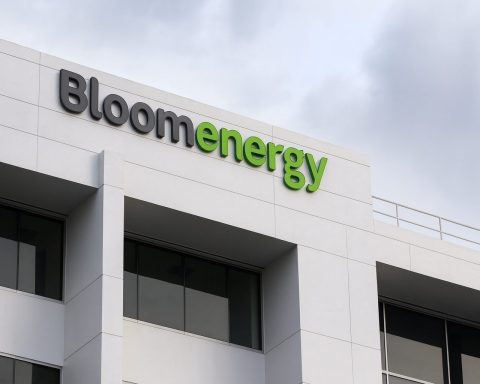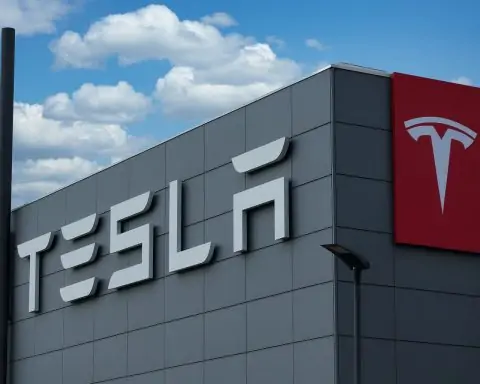Key facts (updated Nov 5, 2025):
- ESA launches “HOBI‑WAN”. A new European Space Agency pilot will test whether gas‑fermentation can make protein from hydrogen, oxygen and CO₂ in microgravity; OHB System AG is prime contractor and Solar Foods is the biotech partner. An eight‑month ground phase starts now, followed by a flight model for the ISS. [1]
- Scientists show yeast can shrug off “Martian” stress. Indian teams at IISc and PRL report baker’s yeast surviving Mach‑5.6 shock waves and toxic perchlorate salts—conditions relevant to Mars—by forming protective RNA–protein condensates. The work appears in PNAS Nexus and was highlighted this week by EarthSky. [2]
- Public engagement is booming. Space.com says the physics‑based builder “Mars First Logistics” left Early Access on Nov 3, inviting players to design rovers that solve Mars‑style logistics. [3]
- What experts say. “This project aims at developing a key resource… for human spaceflight’s autonomy [and] resilience,” ESA’s chief exploration scientist Dr. Angélique Van Ombergen said of HOBI‑WAN. Lead yeast author Riya Dhage called shock‑tube experiments on live cells “a hurdle … not attempted before.” [4]
- Stocks in focus (intraday/last trade, local time):Solar Foods (SFOODS: Helsinki) ~€5.5 (First North; listed since Sept 2024). OHB SE (XETRA: OHB) last close ~€106 (Nov 4). Airbus (PAR: AIR) ~€212–213 today. See catalysts and context below. [5]
The story: Biology is moving from thought experiment to flight plan
Europe’s HOBI‑WAN pilot (Hydrogen‑Oxidizing Bacteria in Weightlessness As a source of Nutrition) is ESA’s clearest sign yet that microbial food production will be part of living off‑Earth. The agency says the demonstrator feeds a bacterial culture with stored gases (H₂, O₂, CO₂) to produce Solein, a protein‑rich powder that needs “neither farmland nor sunlight.” The ISS testbed will ride in a standard locker and includes safety‑critical gas‑injection cartridges because hydrogen/oxygen handling in microgravity must be fail‑safe. The first eight months build and validate a ground “science model,” then ESA aims to manufacture, test and launch a flight unit. [6]
Prime contractor OHB System AG will integrate the hardware and flight operations. Biotech partner Solar Foods supplies the Solein gas‑fermentation process, adapted for microgravity. “We are truly happy that we get to collaborate with OHB,” Solar Foods’ Arttu Luukanen said, noting certification and safety will be central to a system astronauts can actually operate. [7]
Why now? ESA frames HOBI‑WAN inside Terrae Novae, its Moon‑and‑Mars exploration roadmap. Dr. Angélique Van Ombergen underlined the mission stakes: “This project aims at developing a key resource which will allow us to improve human spaceflight’s autonomy, resilience and also the well‑being of our astronauts.” [8]
Independent coverage this morning from Orbital Today and others confirms the two‑phase plan: ground model now, flight model to the ISS if phase one meets objectives. [9] Solar Foods also issued a press release (Nov 3) detailing its OHB contract and the ISS goal. [10]
The science case: Yeast endures Mars‑like punishment
While HOBI‑WAN tries to make protein, another team asked whether Earth microbes can survive Mars. Researchers at India’s IISc and PRL blasted baker’s yeast with Mach‑5.6 shock waves (simulating meteor impacts or marsquakes) and soaked it in 100 mM sodium perchlorate (a toxic salt common on Mars). Many cells survived—alone and in combination—by assembling ribonucleoprotein (RNP) condensates (P‑bodies and stress granules) that stabilize mRNA under stress. Mutants that couldn’t form condensates fared poorly. [11]
Lead author Riya Dhage said a key hurdle was “setting up the HISTA tube to expose live yeast cells to shock waves.” Co‑author Purusharth Rajyaguru added: “We were surprised to observe yeast surviving the Mars‑like stress conditions.” (EarthSky, Nov 4). [12] Sci‑News, Phys.org and Astrobiology.com published independent summaries aligned with those findings. [13]
Why it matters: This is not a “let’s sprinkle sourdough on Mars” moment. It is evidence that cellular stress machinery works under Mars‑relevant insults, which strengthens the case for bioprocessing—fermentation for food and nutrients (vitamins, essential amino acids), waste recycling, even ISRU‑adjacent tasks—inside Mars habitats, where perchlorates and impacts are part of the environment. NASA’s ongoing BioNutrients series similarly uses engineered yeast to manufacture vitamins on‑orbit, while ESA’s decades‑long MELiSSA program seeks closed loops for air, water and food. Together, the trajectory is clear. [14]
Culture catch‑up: A Mars “sandbox” goes mainstream
On Nov 3, Space.com spotlighted the 1.0 launch of “Mars First Logistics”, a calm, systems‑thinking game where players design modular rovers and build infrastructure to move odd‑shaped cargo across rugged Martian terrain. It’s entertainment—but also a subtle teacher about terrain, torque and transport, the very logistics that future crews (and robots) must master. [15]
What’s next (near‑term milestones)
- HOBI‑WAN phase 1 (≈8 months): build and test the ground science model; decision gate for flight hardware. Expect engineering notes on cartridge design and bioreactor autonomy. [16]
- OHB calendar: Q3 2025 earnings on Nov 13, 2025; ESA‑related backlog color is likely a focal point. [17]
- Solar Foods calendar: next earnings Dec 3, 2025 (First North Helsinki). Watch for CAPEX and space‑line items tied to HOBI‑WAN. [18]
- Science follow‑ups: Expect replication and extension of the yeast‑under‑perchlorate work to other microbes and to reduced‑gravity conditions. (PNAS Nexus paper and IISc note). [19]
Market watch: prices, context & a realistic forecast
Note: Figures below reflect last available trades today (Nov 5, 2025) or prior close where noted; quotes are delayed; always check your broker.
- Solar Foods (SFOODS: First North Helsinki) — ~€5.52 last trade; the company listed in Sept 2024 and just announced its HOBI‑WAN contract with OHB for an ISS‑aimed Solein pilot. Set‑up: Early revenue impact likely modest; credibility and visibility are the bigger levers. Near‑term catalyst is Dec 3 earnings; investors will look for details on space R&D spend vs. terrestrial commercialization. [20]
- OHB SE (XETRA: OHB) — ~€106 last close (Nov 4). Set‑up: HOBI‑WAN is strategically meaningful but financially small in the near term relative to OHB’s ~€1.2B annual sales and multi‑billion‑euro backlog; still, it reinforces OHB’s role in European life‑support tech and ISS payloads. Nov 13 earnings may give color on Terrae Novae exposure and payload pipeline. [21]
- Airbus (PAR: AIR) — ~€212–213 today; not a direct HOBI‑WAN beneficiary but a bellwether for European aerospace and an ESA mainstay (via Defense & Space). Industry backdrop remains constructive per recent analyst sentiment; defense/space mix supports multi‑year capex cycles. [22]
Forecast (qualitative):
- If phase‑1 HOBI‑WAN milestones are hit in ~8 months and ESA green‑lights a flight unit, expect incremental sentiment tailwinds for both OHB (systems integration credibility) and Solar Foods (de‑risking of Solein in microgravity). Material revenue uplift, however, would require scale‑up beyond a technology demonstrator. [23]
- Macro tailwinds—from closed‑loop life‑support spending (ESA MELiSSA, NASA life‑support/food tech) and a renewed focus on mission autonomy—likely favor European space integrators and specialty biotechs over a 2–3 year horizon. Execution in safety certification and autonomous operations will be the gating items. [24]
- Risk factors: microgravity fluid dynamics (gas‑liquid handling), hydrogen safety, crew‑time budgets, and perchlorate handling/sanitization inside Martian habitats; on Earth, regulatory paths for novel proteins and consumer acceptance will shape Solar Foods’ commercial runway. [25]
(This section is news analysis, not investment advice.)
Expert voices
- Angélique Van Ombergen, ESA: “This project aims at developing a key resource which will allow us to improve human spaceflight’s autonomy [and] resilience.” [26]
- Riya Dhage, IISc (lead author): “Setting up the HISTA tube to expose live yeast cells to shock waves [was] … not attempted before.” [27]
- Purusharth Rajyaguru, IISc: “We were surprised to observe yeast surviving the Mars‑like stress conditions.” [28]
- Arttu Luukanen, Solar Foods: collaborating with OHB will help design a space‑suitable system that can be safely operated on a manned station. [29]
Bigger picture: from yeast to “air protein,” a closed‑loop future
ESA’s MELiSSA program has spent decades proving that microbes and plants can recycle waste into air, water and food; NASA is similarly advancing space food systems and fermented nutrients on the ISS. HOBI‑WAN fits squarely into that lineage, while the yeast survivability study expands the microbial toolkit for life‑support biomanufacturing under Mars‑relevant stress. Put simply: biology scales where rockets can’t. [30]
Sources & further reading
- ESA press release launching HOBI‑WAN (Nov 3), including partners, timeline and technical approach; plus OHB and Solar Foods partner statements. [31]
- Solar Foods press release (Nov 3) and exchange notices confirming the OHB contract and listing details. [32]
- Orbital Today roundup (Nov 5) and additional coverage (The Register, Open Access Government, FoodIngredientsFirst). [33]
- Yeast survivability: PNAS Nexus paper; IISc note; independent summaries (EarthSky, Astrobiology.com, Phys.org, Sci‑News). [34]
- Mars First Logistics review at Space.com (Nov 3). [35]
- Market data: Solar Foods (FT/Morningstar/Yahoo); OHB (Yahoo/MarketWatch); Airbus (Reuters/Investing.com). [36]
References
1. www.esa.int, 2. academic.oup.com, 3. www.space.com, 4. www.esa.int, 5. markets.ft.com, 6. www.esa.int, 7. www.esa.int, 8. www.esa.int, 9. orbitaltoday.com, 10. solarfoods.com, 11. academic.oup.com, 12. earthsky.org, 13. www.sci.news, 14. www.nasa.gov, 15. www.space.com, 16. www.esa.int, 17. www.ohb.de, 18. www.investing.com, 19. academic.oup.com, 20. markets.ft.com, 21. finance.yahoo.com, 22. www.reuters.com, 23. www.esa.int, 24. www.esa.int, 25. www.esa.int, 26. www.esa.int, 27. earthsky.org, 28. earthsky.org, 29. www.esa.int, 30. www.esa.int, 31. www.esa.int, 32. solarfoods.com, 33. orbitaltoday.com, 34. academic.oup.com, 35. www.space.com, 36. markets.ft.com










